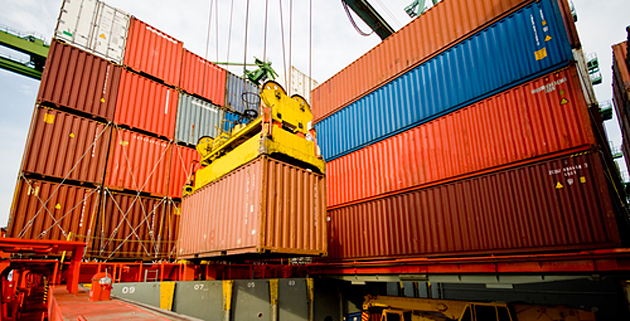A truck driver pulls into a rest area on the Alexandre Balbo Highway in the state of Sao Paulo. Before long, he is held up and overpowered by two armed men. The two men get into the truck and make away with a pharmaceutical shipment worth $760,000. In addition to the pharmaceuticals, they also steal invoices that could be used to help sell the drugs on the black market.
As the world's sixth largest economy, Brazil is an increasingly important market for more and more multinational corporations. Exports to Brazil, for instance, more than doubled in the five years from 2006 to 2011, according to figures from the U.S. Commerce Department.
But Brazil is also one of three countries, along with Mexico and South Africa, at greatest risk for cargo theft, according to FreightWatch International, an Austin, Texas-based logistics security services company. Poor transportation infrastructure and high crime rates are the biggest contributors to Brazil's problem with cargo theft. The majority of cargo thefts in Brazil are classified as hijackings as thieves often use violence, or the threat of violence, to stop trucks and steal the goods, often along with the truck and trailer. This problem is most severe in S?o Paulo state, the country's primary industrial and economic engine. More than half of all cargo crime in Brazil takes place there, according to estimates from the Cargo Transporters Union of the Sao Paulo State (SETCESP).
Although the number of thefts in the state decreased in 2011 compared to 2010, the value of the goods stolen increased by 5.7% to $171.6 million. Pharmaceuticals are often a prime target for cargo thieves. In 2011, with losses totaling about $14.4 million, they were the fourth-most-stolen commodity in Brazil, behind food, drinks, electronics and "mixed merchandise loads."
Pharmaceuticals are a hot item; cargo thieves can reap a rich reward from the theft of just one shipment. In the United States, an average truckload of stolen drugs is worth $3.8 million, according to a Bloomberg BusinessWeek article citing FreightWatch intelligence director Dan Burges. The payoff for cargo criminals can be significant as they are able to acquire the drugs at virtually no cost and sell them through illegal channels. FreightWatch has estimated that prices for black market pharmaceuticals can range from double to as much as 12 times what someone would pay at a pharmacy.
In the United States, one pill of Oxycontin costs the consumer $6 on average at the pharmacy, but runs anywhere from $20 to $80 on the street. Oxycodone, also $6 behind the counter, costs $12 to $40 per pill when sold illegally.
Because they need the invoices and other documents to sell the pharmaceuticals, cargo thieves typically conduct pharmaceutical heists with inside assistance. For example, truck drivers may conspire with employees at third-party logistics companies. These thieves are usually very well organized, often with several cells working together behind the scenes to arrange the theft and develop the channels for the sale of the product.
ACTION STEPS TO HELP STEM CARGO THEFT
- Screen the logistics company, the trucking company and especially the drivers. Employees should be screened to determine if any individual has had problems with their credit or making bill payments, which could be red flags indicating that the individual might be susceptible to bribes or involvement in criminal activity.
- Explore the use of technology. GPS and radio frequency identification (RFID) tracking devices can be used to track the location of trucks and cargo. Of the 2.3 million cargo-carrying trucks in Brazil, however, only 14% are equipped with on-board technology to help prevent robberies or at least increase the potential for recovery of a stolen shipment, according to Telematics Update. As more thieves begin using special jammers to neutralize the effect of GPS tracking, telematics firms are responding with anti-jamming tools.
- Marine insurance can help reduce the financial impact from theft of goods being transported over land, air or sea. Businesses that plan to ship goods within Brazil should look for an insurer that has expertise in Latin America as well as a global network of local offices that can expedite claims handling and offer loss control services.
While cargo theft is a serious risk in Brazil, there are a number of things companies can do to help minimize the potential for a loss. For one, businesses should have a clear understanding of the terms of their sales contract so they understand exactly who has responsibility for the goods and at what point that responsibility changes hands from the seller to the buyer.
INCOTERMS, or International Commercial Terms, are standardized definitions used by the global shipping industry to provide a common framework for issues such as ownership of goods and transfer of risk of loss and damage. These terms spell out exactly who has responsibility for the goods.
It is also important for businesses to know where the risk of theft is greatest and to take steps to avoid those locations as much as possible. As stated previously, most hijackings in Brazil take place in S?o Paulo state at truck stops and certain state highways.
The three highways within Sao Paulo state reporting the greatest number of thefts in 2011 were Anhanguera, Dutra and Regis Bittencourt, according to FreightWatch. Companies and cargo carriers must also be extremely cautious in the area of Sao Paulo city close to the Marginal Tiete section (SP-015) highway.
To prepare shipments properly, businesses need to know details about their shipments, their point of origin, their destination and the routes they will be taking. They need to make sure drivers steer away from roads known to be at high risk but make sure to keep all of this information as confidential as possible.

